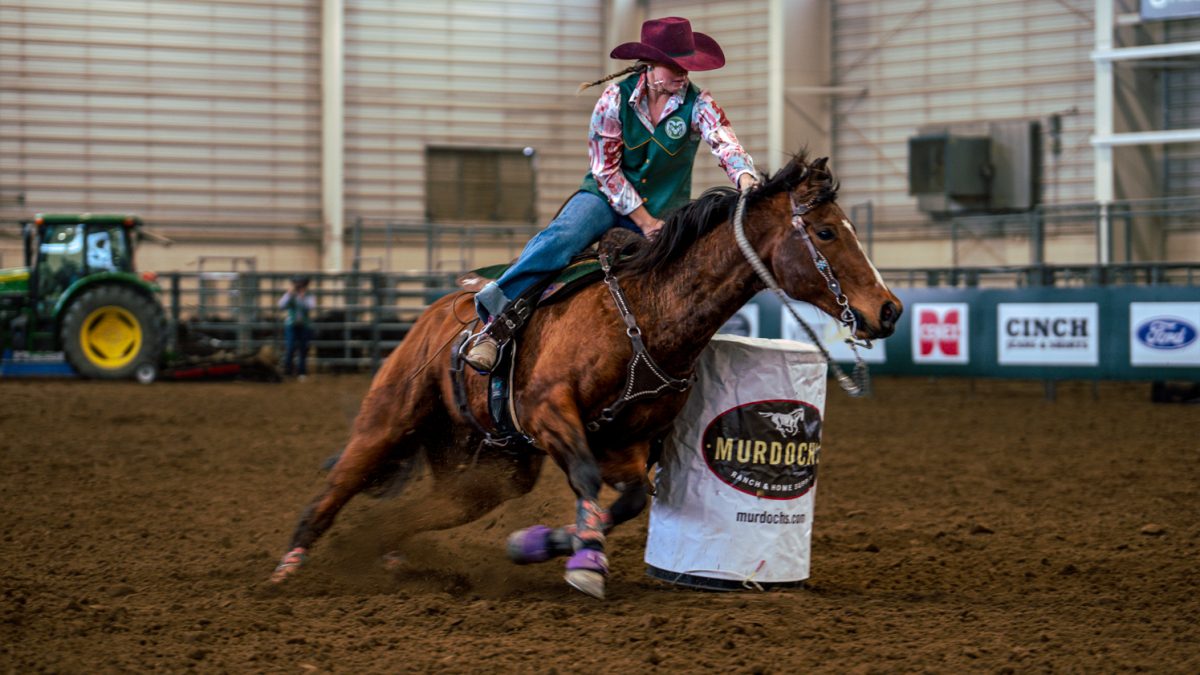Of all the symbols representing a spooky Halloween, bats are often the most feared and the most misunderstood.

Exploiting people’s fear of their blood-sucking tendencies and their attraction to women’s hair, popular culture has frequently vilified bats in various portrayals of characters like Dracula and Batman. In reality, bat’s connection with Halloween is not nearly as ominous as the movies suggest.
Theresa Laverty, a PhD candidate in the Fish, Wildlife and Conservation Biology department at Colorado State University, studies these creatures of the night and attempts to make sense of their behaviors.
Laverty researches bats in the Namib Desert in northwestern Namibia.
“I’m looking at populations of primarily insect-eating bats over water sources in the desert out there and trying to figure out why do we have some species of bats in some places but not others,” Laverty said.
Laverty regularly handles dozens of bats on a nightly basis, capturing them in fine nets hung along the water’s edge and monitoring their activity via acoustic recording devices that can identify bat species based on their calls.
“I’ve never had a scary encounter with a bat,” Laverty said. “…I did have lions on a handful of occasions pop up or walk by the water sites when I was out there. Oftentimes they were ignoring me, but one night they popped up less than five meters from the net as we were setting it up.”

Bats were clearly the least of Laverty’s worries throughout her fieldwork, but she did wear surgical gloves when handling bats to reduce the risk of disease transmission. Bats are frequently cited as a problematic rabies vector, but only one percent or less of bats worldwide carry rabies, about the same percentage other mammals, Laverty said
Many of the myths revolving around bats and their relationship with the occult originated centuries ago. Ancient people would build large fires around the time of Halloween, attracting insects and therefore their nocturnal predators to the scene. Bats became associated with these rituals and the rumor that bats drank human blood began to circulate around the 17th century.
“Bats get a bad reputation because of how media has portrayed them, particularly in the Americas where we have our only three species of vampire bats,” Laverty said. “Two of them are known to feed (only) on birds’ blood, but only one of them is known to feed on mammal blood. That one is in Central America, and is pretty specialized to livestock.”
While humans need not worry about bats sucking their blood, what about the myth that bats nest in human hair? It turns out that bats do not, in fact, build nests, and have very little interest in peoples’ hair. Centuries ago when showers were few and far between, women often kept their hair up using fine nets. The grime of the unwashed would attract insects, which would in turn attract bats that occasionally became ensnared in the hairnets and began the churning of the rumor mill.
“What’s interesting though is that bats get a bad reputation in both North and South America and in European countries because of Dracula, but down at my study site, bats were never associated with vampirism, which should make sense (since) there are no vampire bats in Africa,” Laverty said. “Rather than worrying about them getting into their hair, they’re more worried about them cutting their ears off. It kind of makes sense because these tend to be Black populations, which tend not to have long hair, and they know that (bats) swoop by their heads so that’s what they’re told as little kids: a bat’s wings will cut your ear off or infect your ear and make it go rotten.”
Not only do bats deserve little of the fear we associate with them, they also provide invaluable services to human populations.
“(Bats pollinate) plants like the agave that give us our tequila and mescal,” Laverty said. “We wouldn’t have tequila really without bats, but also species like the banana and the mango derive a lot of their pollination benefits from bats. A lot of those crops that are imported here into Colorado probably have some influence from bats.”
As you are slipping into your Dracula costume this Halloween, take a shot of tequila and take a moment to reflect on how spooky life would be without bats .
To learn more about about bats visit:
www.batcon.org
Twitter: #SaveTheBats
Laverty’s Blog: http://voices.nationalgeographic.org/author/tlaverty/
Collegian reporter Casey Setash can be reached at entertainment@collegian.com or on Twitter at @caseylovesbirds.





